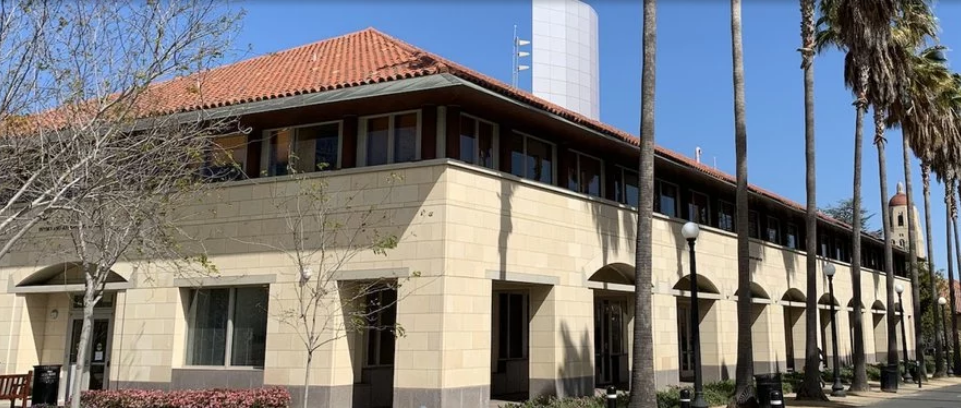W.W.汉森实验物理实验室(HEPL)于1951年开始作为高能物理实验室(也称为HEPL)(1990年更名为1990年),之后斯坦福微波实验室分为两个部分,HEPL和微波实验室(后来更名为金茨顿实验室)。在1990年之前,这两个实验室统称为W.W.汉森物理实验室。
前身微波实验室占据了现在被称为HEPL的建筑,于1945年开始作为物理系的一个部门。正是在那里,爱德华·金茨顿和马文·乔多罗开发了世界上第一个高功率速调加速器,在威廉·韦伯斯特·汉森的领导下,世界上第一个电子直线加速器就在那里建成。
第二次世界大战前,汉森与罗素·瓦里安和西居尔德·瓦里安在物理系开始的微波研究对物理学和工程学产生了双重影响,这在HEPL的整个历史中都很明显。正如Ginzton谦虚地说:“微波艺术不仅承诺了新的应用,而且作为一种新工具,它也有望在物理研究中有所帮助。起源于HEPL的新研究领域继续“承诺新的应用”和“承诺对物理研究有所帮助”。
在第一个十年中,HEPL的业务集中在加速器研究上,尽管遵循两条截然不同的路线:罗伯特霍夫施塔特的高分辨率电子散射和沃尔夫冈K.H.帕诺夫斯基的介子物理学。霍夫施塔特因其在核外形因子方面的工作而获得1961年诺贝尔奖。Panofsky继续在斯坦福线性加速器中心(SLAC)开发了非常成功的两英里长的加速器,这是HEPL加速器的继任者。
从1963年左右开始,HEPL有各种各样的新研究项目。

在加速器物理学中,从1964年到1981年,实验室的主要新活动是超导加速器(SCA)的发展。SCA的想法很简单。它是在超流体氦温度下操作加速器结构,其谐振腔由超导铌而不是铜制成。在1979年至1981年间,SCA在几个实验中展示了其进行核物理的能力,更重要的是,它有两个非常重要的技术分支:它为自由电子激光器(FEL)的成功提供了途径;它使HEPL在大规模低温技术的应用方面具有国际上独特的能力。
FEL由约翰·马迪发明,是一种通过自由电子通过共振结构的运动产生强烈相干辐射的装置。自斯坦福大学的最初发展以来,FEL研究已成为一项重大的国际活动。斯坦福FEL在1.6到10微米的波长范围内运行,于1976年开始运行。FEL是HEPL目前最大的活动之一。它具有很强的跨部门性,涉及电气工程,物理学,应用物理学,SLAC和医学院教师的合作。
The W.W. Hansen Laboratory for Experimental Physics (HEPL) began as the High Energy Physics Laboratory (also known as HEPL) in 1951 (renamed 1990 1990), after which the Stanford Microwave Laboratory was divided into two parts, HEPL and the Microwave Laboratory (later renamed the Kintston Laboratory). Until 1990, the two laboratories were collectively known as the W.W. Hansen Physics Laboratory.
The former Microwave Laboratory occupied the building now known as HEPL and began as a department of Physics in 1945. It was there that Edward Kintston and Marvin Chodoro developed the world's first high-power klystron accelerator, and under the leadership of William Webster Hansen, the world's first electron linear accelerator was built there.
The microwave research that Hansen began with Russell Varian and Sigurd Varian in the Department of Physics before World War II had a dual impact on physics and engineering that was evident throughout HEPL's history. As Ginzton modestly puts it, "Microwave art not only promises new applications, but as a new tool, it also promises to help in physics research. New areas of research originating at HEPL continue to "promise new applications" and "promise to help physics research".
In its first decade, HEPL's business focused on accelerator research, albeit following two distinct routes: Robert Hofstadter's high-resolution electron scattering and Wolfgaon's K.H. Panofsky's pion physics. Hofstadter won the 1961 Nobel Prize for his work on nuclear form factors. Panofsky went on to develop the highly successful two-mile-long accelerator at the Stanford Linear Accelerator Center (SLAC), the successor to the HEPL accelerator.
Beginning around 1963, HEPL had a variety of new research projects.
In accelerator physics, the major new activity in the laboratory from 1964 to 1981 was the development of the superconducting accelerator (SCA). The idea of SCA is simple. It operates the accelerator structure at superfluid helium temperatures, and its resonators are made of superconducting niobium instead of copper. Between 1979 and 1981, SCA demonstrated its capability to perform nuclear physics in several experiments, and more importantly, it had two very important technical branches: it provided access to the success of the free-electron laser (FEL); It makes HEPL internationally unique in the application of large-scale cryogenic technology.
FEL, invented by John Madi, is a device that generates intense coherent radiation through the movement of free electrons through resonant structures. Since Stanford's initial development, FEL research has become a major international activity. The Stanford FEL operates in the wavelength range of 1.6 to 10 microns and began operation in 1976. FEL is currently one of HEPL's biggest activities. It is highly interdepartmental, involving the collaboration of electrical engineering, physics, applied physics, SLAC, and medical school faculty.